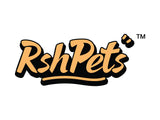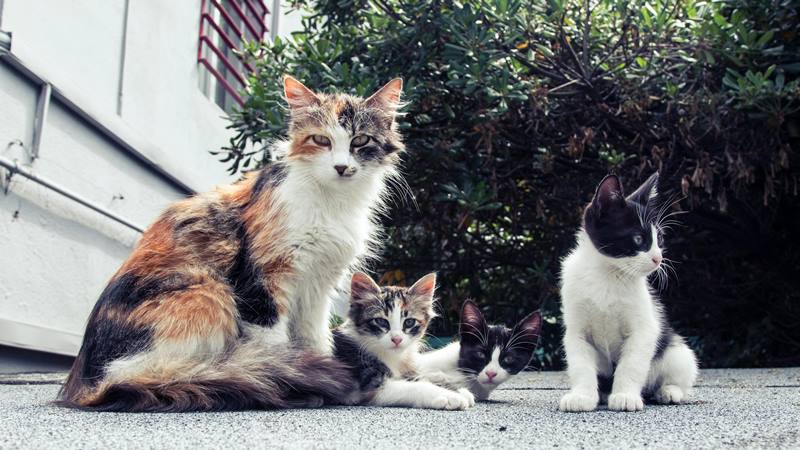In this Article
In today's fast-paced world, pet owners are increasingly looking for ways to combine functionality with aesthetics in their living spaces. For cat lovers, wall-mounted cat furniture offers a unique opportunity to create an enriching environment for feline companions without compromising the sleek, contemporary look of modern interiors. This expert article explores the best design solutions for seamlessly incorporating elements such as cat shelves, bridges, hammocks and climbing walls into your home. By focusing on the principles of minimalism, space efficiency, and harmony with existing décor, we can transform ordinary walls into dynamic, cat-friendly zones that enhance both pet well-being and homeowner satisfaction. Drawing on architectural trends, behavioral science, and interior design expertise, we'll explore practical strategies that emphasize elegance and practicality.
Understanding the Appeal of Wall-mounted Cat Furniture
Wall-mounted cat furniture is not just a trend; it's a response to the natural behavior of cats. Felines are instinctive climbers, hunters and observers, drawn to elevated spaces where they feel safe and in control. Heights provide a vantage point from which to survey their territory, reduce stress, and promote physical activity. In urban apartments or minimalist homes where floor space is at a premium, vertical solutions such as shelves and perches maximize usability without cluttering the floor.
From a design perspective, these installations can serve as sculptural elements that add visual interest to blank walls. Modern interiors often emphasize clean lines, open spaces, and multifunctional features-qualities that align perfectly with modular cat furniture. By choosing pieces that mimic architectural details, such as floating shelves or geometric bridges, you can create a cohesive look that feels intentional rather than improvised. This integration not only meets your cat's needs, but also enhances the overall ambiance of your home, making it a conversation starter for guests.
Consider the psychological benefits for cats: elevated perches near windows allow them to enjoy bird watching or sunbathing, stimulating their senses and preventing boredom. In multi-pet households, vertical territories help reduce conflict by providing personal space. The challenge for designers is to balance these functional aspects with aesthetic harmony, ensuring that the furniture complements rather than disrupts the flow of the space.
Key design principles for modern integration
To successfully integrate wall-mounted cat furniture into a modern interior, adhere to basic design principles. First, embrace minimalism. Modern aesthetics favor simplicity, so opt for streamlined designs with clean edges and subtle profiles. Avoid bulky or ornate pieces; instead, choose modular components that can be arranged in asymmetrical patterns to create dynamic wall art.
Color coordination is key. In neutral-toned modern spaces-think white, gray, and earth tones-pick furniture in matching or complementary shades to blend seamlessly. For example, light wood finishes can reflect Scandinavian influences, while matte black or metallic accents work well in industrial lofts. If your interior features bold accents, such as a vibrant accent wall, incorporate cat elements in muted tones to maintain balance.
Material selection plays a key role in durability and style. Natural woods, such as birch or oak, offer warmth and sustainability, in keeping with eco-conscious modern trends. Acrylic or glass-like materials can provide a futuristic, transparent look that makes the furniture almost invisible against the wall. Make sure materials are non-toxic and scratch-resistant to withstand daily use.
Space planning is another cornerstone. Evaluate the layout of your space: place perches in underutilized areas such as hallways or over doorways to maintain an open floor plan. Use the rule of thirds for composition-divide the wall into sections and position elements off-center for a more artistic feel. In smaller spaces, vertical stacking creates the illusion of height, drawing the eye upward and making rooms feel larger.
Lighting integration enhances both functionality and drama. Position cat shelves near natural light sources to encourage use, and add subtle LED strips below for a modern glow that highlights the structure at night. This not only makes it easier for your cat to see, but also makes the installation a focal point, much like illuminated art installations in contemporary galleries.
Strategic placement for optimal harmony
Placement is where design meets behavior. Start by observing your cat's habits: Do they prefer sunny spots or quiet corners? Placing furniture near windows taps into their love of outdoor observation, turning a simple shelf into a "cat TV" perch. In living rooms, integrate shelving above sofas or entertainment units to create layered visual interest without encroaching on human space.
For kitchens or dining areas, avoid food prep areas to prevent sanitation issues, but consider high-mounted bridges that span walls and mimic architectural beams. In bedrooms, wall-mounted hammocks or dens provide cozy retreats, positioned at varying heights to encourage climbing sequences that mimic natural tree structures.
Multi-level designs encourage exploration: a series of staggered shelves leading to a higher platform simulates a playground and encourages movement. In open-concept homes, use them as room dividers - wall-mounted elements can subtly zone spaces without physical barriers, maintaining the airy feel of modern architecture.
Accessibility is important for all cats, including seniors or those with mobility issues. Incorporate lower entry points with gradual slopes to ensure the design is inclusive. For aesthetic flow, align placements with existing wall features such as artwork or mirrors, creating a gallery-like effect where cat furniture becomes part of the decorative narrative.
Material and texture innovations
Modern interiors thrive on textural contrasts, and cat furniture can make a meaningful contribution. Smooth woods paired with sisal-wrapped scratching posts provide tactile variety that satisfies cats' needs while adding organic elements to sleek environments. For a high-tech twist, consider furniture with built-in smart features, such as motion-activated lights, but keep the designs understated to avoid gadget overload.
Sustainability is a growing priority in contemporary design. Choose reclaimed or FSC-certified woods to align with green principles and reduce environmental impact. Textures such as cork or bamboo offer resilience and a natural patina that ages gracefully, blending with minimalist palettes.
As for customization, modular systems allow for personalization. Mix straight shelves with curved bridges for fluid lines that echo mid-century modern curves, or geometric hexagons for a honeycomb effect in eclectic spaces. This flexibility ensures that the furniture evolves with your interior updates, from seasonal color changes to complete renovations.
Case Studies of Successful Integration
Examining real-world examples illustrates these principles in action. In a compact urban loft, one designer installed a series of floating wooden shelves in a zigzag pattern along a feature wall. Painted to match the room's gray tones, they were invisible when not in use, but provided a vertical gym for the resident cat. Near a floor-to-ceiling window, a hammock perch offered prime viewing and enhanced the room's light-filled serenity.
In a single-family home with an open floor plan, wall-mounted bridges connected adjacent walls to create a "cat highway" above eye level. Using slender metal supports for an industrial feel, this setup preserved floor space for children while giving the cats their domain. The addition of plush cushions in neutral fabrics provided comfort without visual clutter.
For a minimalist apartment, acrylic perches were chosen for their transparency, mounted in a linear fashion to mimic floating stairs. This not only accommodated the cat's climbing instincts, but also enhanced the room's sense of openness, allowing sunlight to pass through unimpeded.
These cases illustrate how thoughtful design can solve common challenges such as limited space or stylistic inconsistencies, turning potential eyesores into assets.
Practical tips for selection and installation
Prioritize quality construction when selecting pieces: look for sturdy mounts that can support your cat's weight, with hidden hardware for a clean look. Measure walls accurately and use stud finders for secure anchoring, and consult a professional if necessary to avoid damage.
Do-it-yourselfers can start simple by repurposing floating bookshelves and adding sisal mats for scratching. For more advanced projects, sketch layouts using design software to visualize integration.
Maintenance is essential for longevity - regular cleaning keeps pieces looking fresh, and regular inspections ensure safety. Rotate configurations seasonally to refresh the space and stimulate your cat.
Budget wise, start small: a few key pieces can make a big impact without breaking the bank. Focus on versatile items that serve multiple functions, such as shelves that double as display boards for plants or books.
Overcoming Common Challenges
Integration isn't without its hurdles. In rental properties, use non-destructive adhesives or tethered options to comply with lease terms. For homes with multiple cats, design multi-path systems to prevent territorial disputes.
Aesthetic fatigue can occur when designs feel too "cat-centric. Counter this by incorporating human elements, such as integrating shelves with picture frames or planters, to create hybrid spaces that appeal to all residents.
Finally, consider acoustics: in echo-prone modern spaces, soft materials on furniture can muffle the sound of playful jumping.
A Symbiotic Design Future
Incorporating wall-mounted cat furniture into modern interiors represents a harmonious blend of pet care and design innovation. By applying the principles of minimalism, strategic placement and material synergy, you can create spaces that nurture feline instincts while enhancing the sophistication of your home. This approach not only promotes healthier, happier cats, but also fosters a deeper connection between pets and their surroundings. As interior design trends evolve toward inclusivity and multifunctionality, these solutions pave the way for homes where every member-human and feline-thrives. Whether you're remodeling a studio or an expansive home, the key is intentionality: think of your walls not as boundaries, but as canvases for creative, feline-friendly expression.

